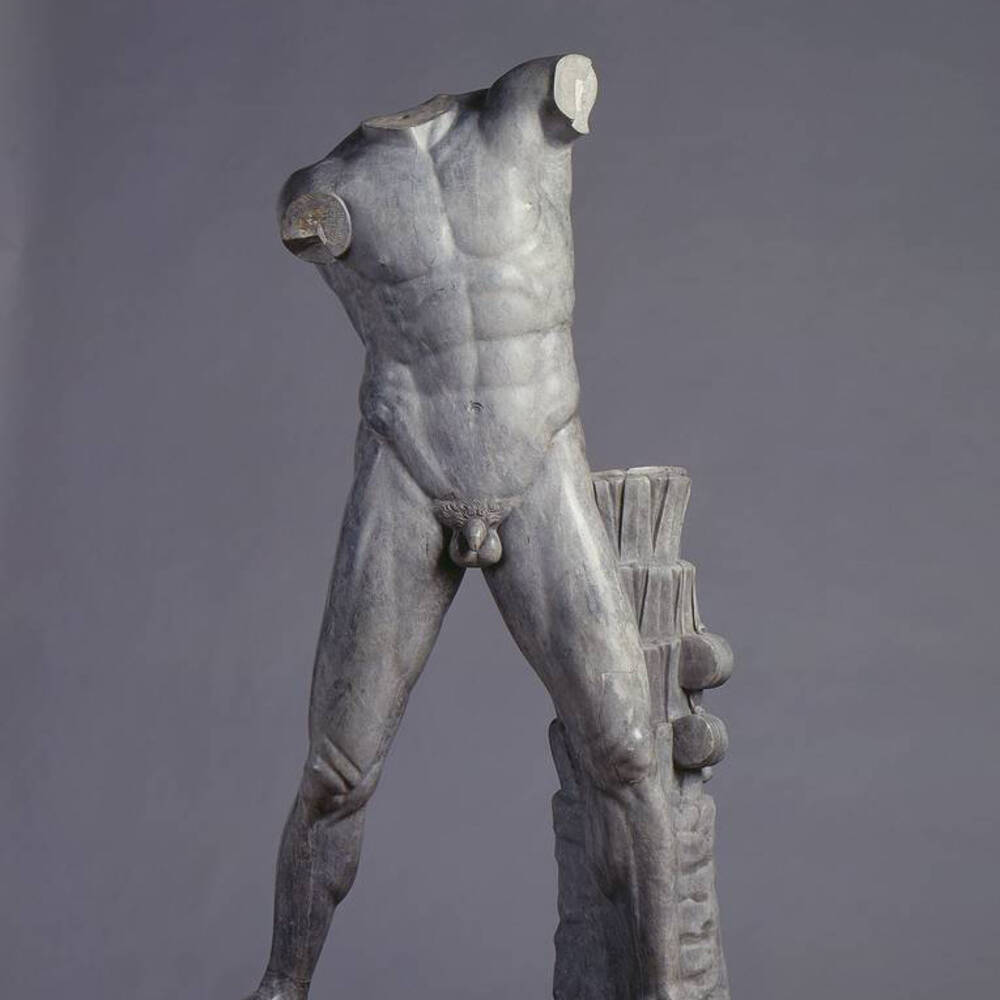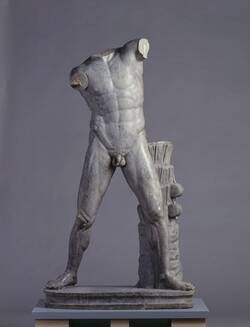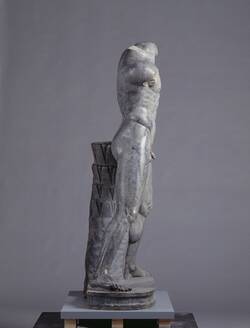The ‘Grey Athlete’ was discovered in Rome in the 1730s and attributes were added that rightly identify him as a boxer. Hanging on the palm trunk are two gloves that athletes used in boxing training in order to reduce the impact of blows. In addition, there are two cylindrical objects that were also used for boxing training; they were made of bronze or lead and were intended for strengthening the arm muscles.
Further Media
This grey boxer is exceptional in more ways than one. First of all, classical statues of this size are almost never carved from dark-grey marble. Moreover, victorious athletes were normally shown at rest. Yet here, despite the figure’s missing arms, his posture clearly suggests he is depicted in action. And, last but not least, we only know of this single copy of the victorious athlete’s original Greek statue, which would certainly have been cast in bronze. The particular design of his stomach muscles also seems quite unique. Since sculptors in the Imperial Roman era drew on a pool of firmly established Greek models, there are usually several copies – or more accurately – versions of other originals.
This led to doubts over whether this boxer statue was genuine – even though its provenance is indisputable, and the material and style are also quite distinctive. Due to those doubts, though, some renowned scholars declared this statue was a forgery from the modern era.
Once such an accusation has been made, it sticks to the object and classical scholars have a hard and laborious job to refute it – rather like journalists having to deal with the charge of fake news today.
But the gloves provide a convincing argument for the boxer’s authenticity. When this statue was found, there were no known classical depictions of such gloves for a forger to copy.
- Location & Dating
- 2nd century CE
- Material & Technique
- Marble
- Dimenions
- H: 166,5 cm (mit ergänztem Kopf, ohne Plinthenbasis)
- Museum
- Skulpturensammlung
- Inventory number
- Hm 097



